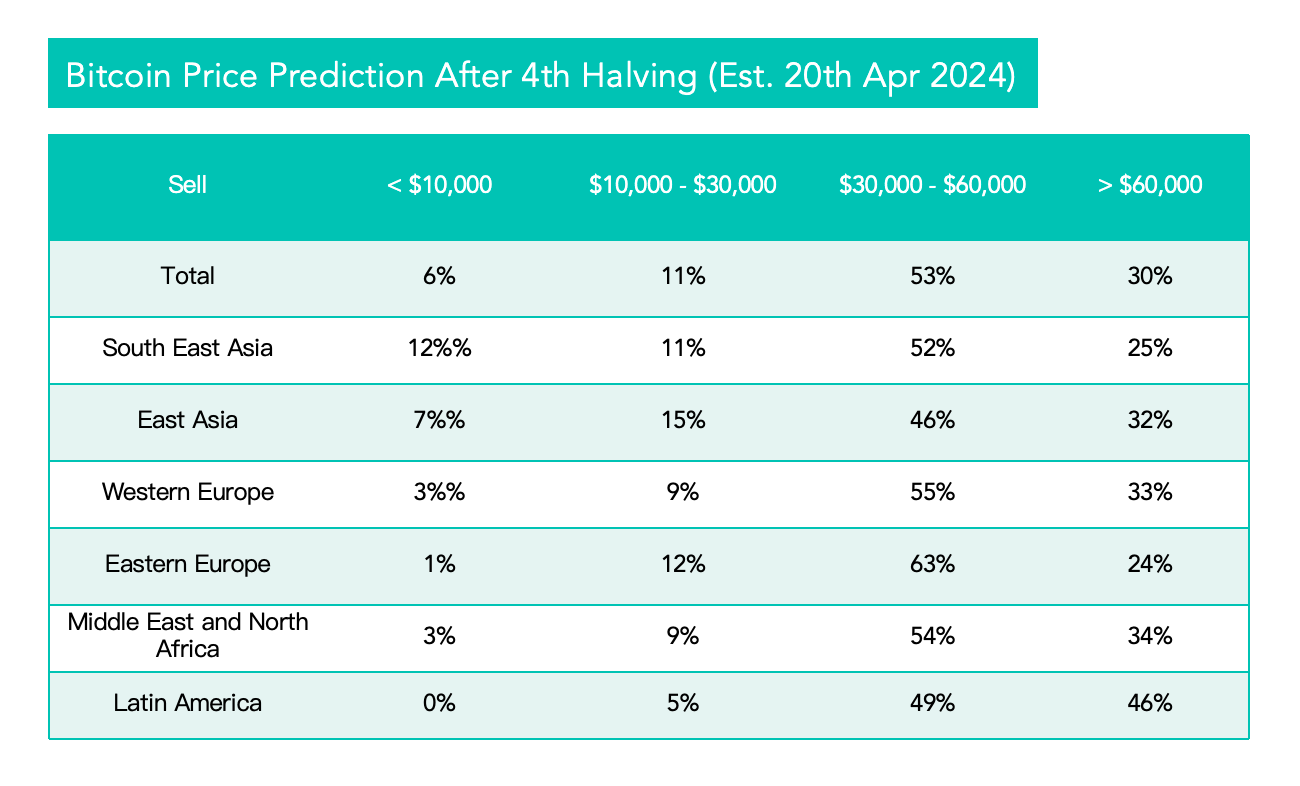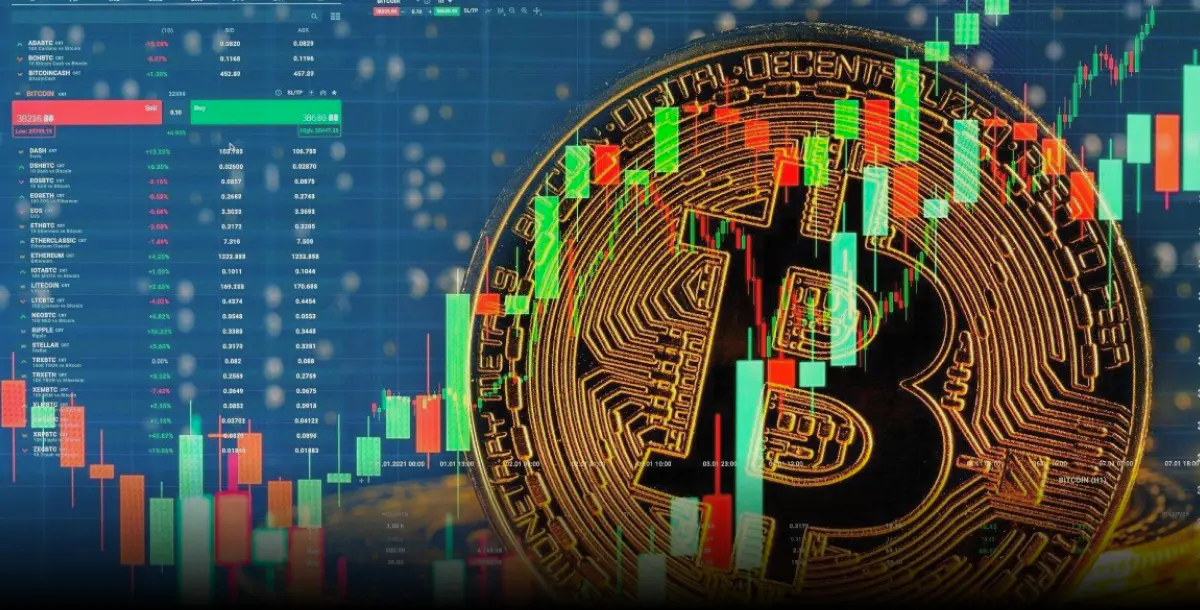
In 2008, a paper titled "Bitcoin: A Peer-to-Peer Electronic Cash System" by an author under the pseudonym Satoshi Nakamoto made its debut. This paper not only sketched the prototype of Bitcoin but also marked the beginning of a new chapter in digital currency.
On January 3, 2009, Satoshi Nakamoto mined the genesis block of Bitcoin, signifying the official birth of Bitcoin and blockchain technology. This innovation completely overturned the centralized monetary system, ushering in a new era of decentralization.
From its inception, Bitcoin was destined to be a product filled with wonder and controversy. The simple term "Bitcoin" encompasses cutting-edge theories and technologies in cryptography, economics, political science, monetary theory, and computer science.
The advent of Bitcoin revolutionized the field of digital currency, disrupting traditional monetary issuance and management models, and fostering profound social change. Despite skepticism and controversies surrounding its development, Bitcoin has emerged as a trendsetter for the era.
History of Bitcoin Development
Early Development (2008-2010): During Bitcoin's early development stage, its price was relatively low, and primarily used for small transactions. In May 2010, a man named Laszlo Hanyecz made the first physical purchase using Bitcoin, buying two pizzas for 10,000 Bitcoins. This transaction is considered the first instance of Bitcoin being used to buy a physical item.
Rapid Growth (2011-2013): In 2011, the price of Bitcoin began to increase rapidly, reaching a peak of $1,242 in 2013. During this period, the range of Bitcoin applications expanded to include investments, payments, and gaming.
Regulation and Volatility (2014-2017): In 2014, Bitcoin experienced a major price crash. Subsequently, governments worldwide began to regulate Bitcoin, raising concerns about its volatility. In 2017, Bitcoin's price again reached a peak of $20,000 but then quickly fell.
Bear Market and Recovery (2018-2022): In 2018, Bitcoin prices crashed, and by early 2022, they reached a low point, with the market entering a bear phase. However, on September 7, 2021, El Salvador became the first country to adopt Bitcoin as legal tender. As technology innovation and applications expanded, the Bitcoin market began to recover. In October 2021, Bitcoin futures ETFs were listed in the U.S.
Positive Factors (2023 to Present): In 2023, the Bitcoin market welcomed several positive developments, likely to promote further growth of Bitcoin. In early 2024, the U.S. approved the first Bitcoin spot ETF.
Key Positive Events for Bitcoin
Institutional Investors Enter the Fray: A Speedy Trend with Profound Impact
In 2023, institutional interest in cryptocurrencies surged significantly, with giants like BlackRock and Grayscale entering the market, bringing substantial capital and liquidity.
On June 15, BlackRock, with an asset management size of $8.59 trillion, took the lead by filing an application for the iShares Bitcoin Trust with the SEC.
Spurred by BlackRock, several financial firms joined the race to apply for new spot ETFs.
The participation of institutional investors demonstrates their recognition of Bitcoin's long-term value, enhancing its market credibility and attracting more investors. As more institutional investors enter the market, Bitcoin is expected to expand further, and its price will receive strong support.
Bitcoin Spot ETFs Approved: Opening the Gates to Traditional Finance
For years, the spot Bitcoin ETF has been considered the 'Holy Grail' of the crypto industry.
An ETF is a publicly traded investment tool that tracks the value of its underlying asset; for a Bitcoin ETF, that asset is Bitcoin. It allows ordinary investors to participate in the crypto realm without owning actual Bitcoins, avoiding complexities like exchanges, crypto wallets, and private keys.
Bitcoin ETFs have emerged in various countries, including Canada, Brazil, and Dubai. In October 2021, ProShares' Bitcoin futures ETF was listed on the New York Stock Exchange.
On January 11, 2024, the U.S. Securities and Exchange Commission (SEC) approved the first ETF directly investing in Bitcoin, marking a significant milestone in the history of Bitcoin development.
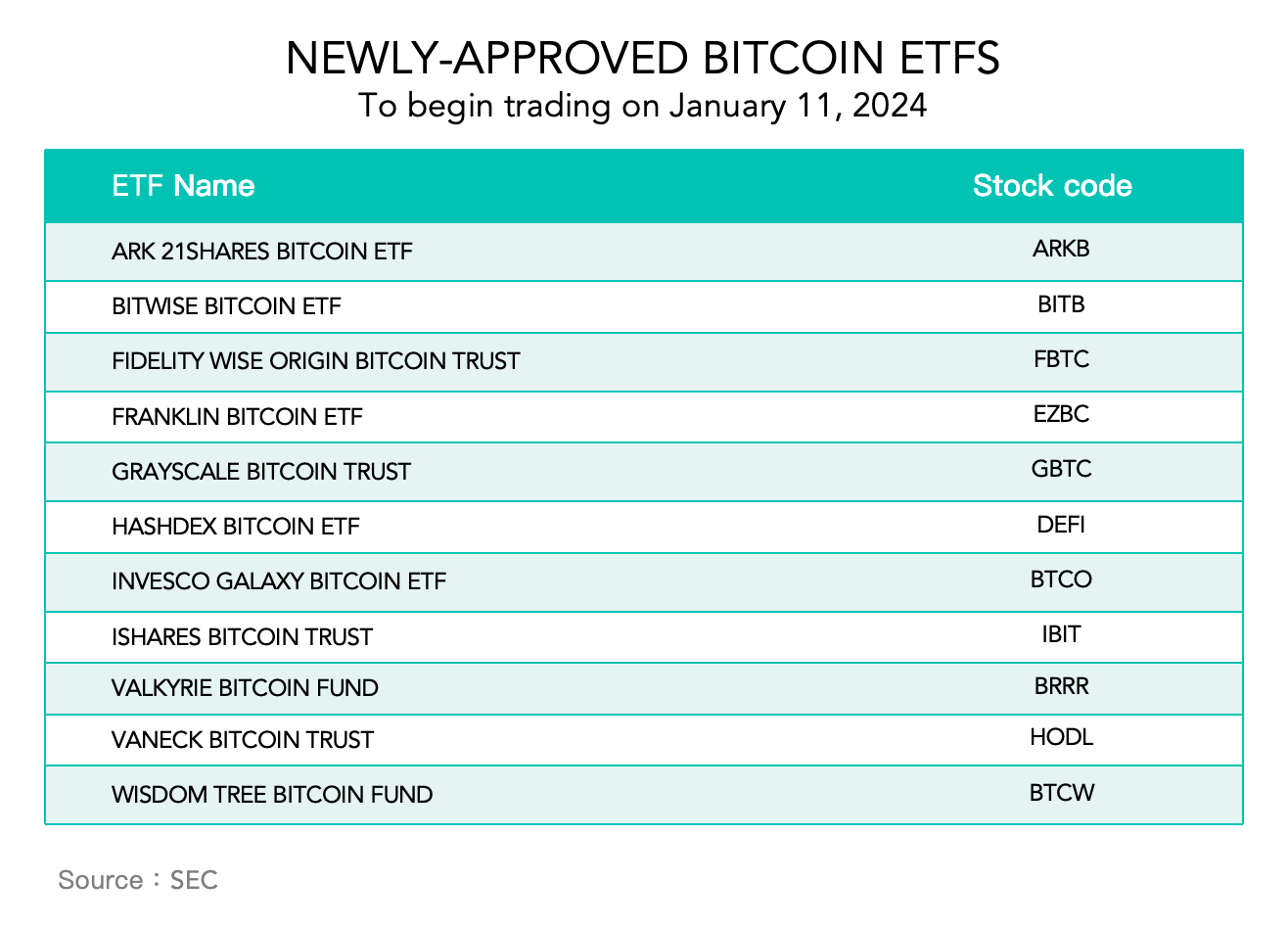
Recently (May 15, 2024), the Hong Kong Securities and Futures Commission approved applications from companies like ChinaAMC (Hong Kong), Bosera International, HashKey, and Carnival International Asset Management to issue ETFs that invest in Bitcoin and Ethereum spot markets. This event undoubtedly became a focal point in Hong Kong's digital asset market, injecting a strong stimulus for investors.
The approval of spot ETFs provides a convenient channel for traditional investors to participate in the Bitcoin market, opening the floodgates for capital inflows into the cryptocurrency market. More Bitcoin ETF approvals are expected in the future, likely further driving up Bitcoin prices.
Bitcoin Halving: A Major Bullish Factor for Supply and Demand
Bitcoin halving refers to the event where the mining reward for adding new blocks to the Bitcoin blockchain is halved every 210,000 blocks (approximately every four years), until all 21 million bitcoins are mined.
Bitcoin halving is a crucial design of the Bitcoin protocol, intended to control the supply of Bitcoin and prevent inflation.
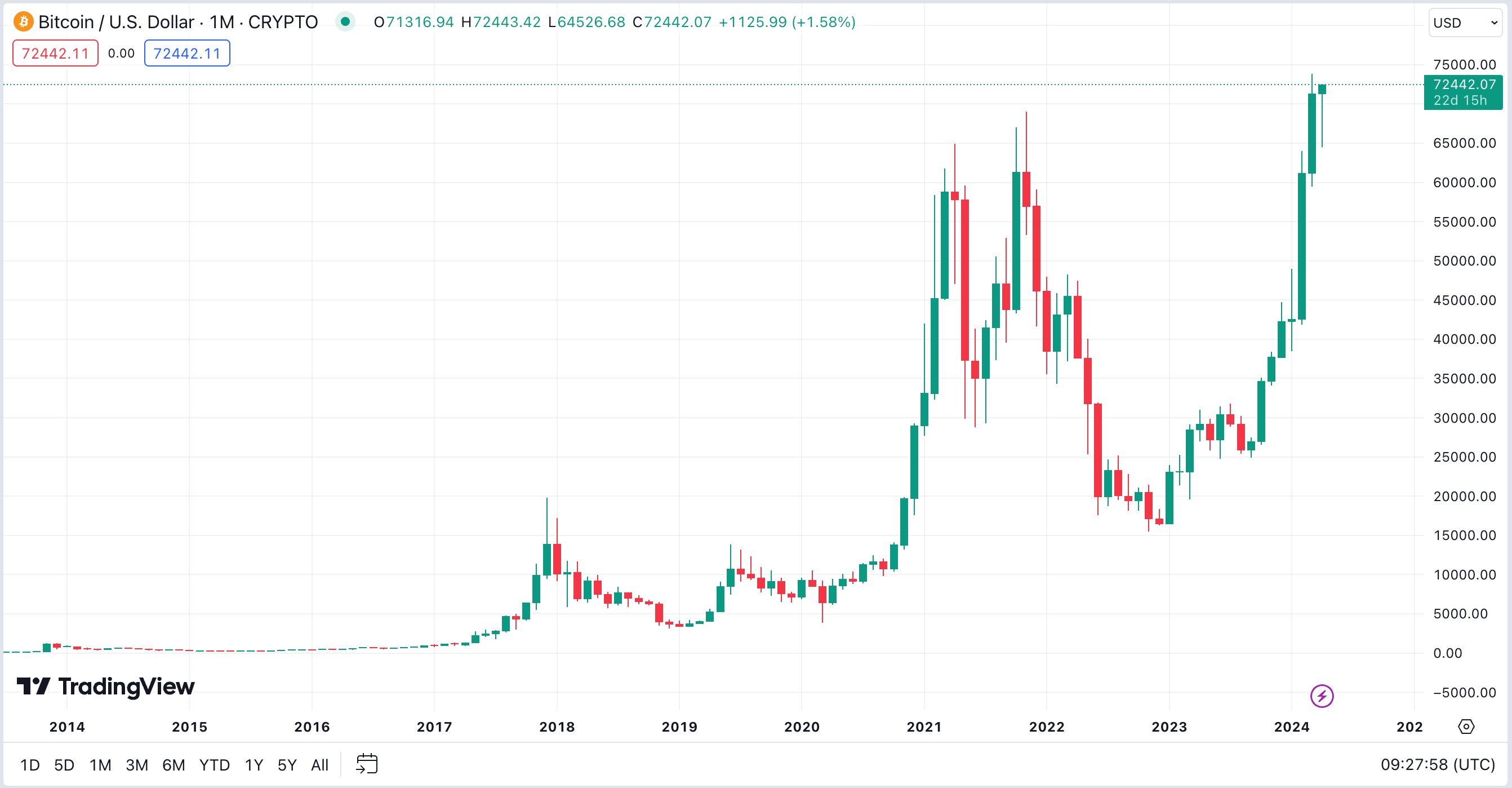
Historical data shows that Bitcoin prices tend to rise significantly after each halving:
-
- The first halving occurred on November 28, 2012, and by December 24, 2013, the price had increased by 95.52 times.
-
- The second halving was on July 9, 2016, leading to a 30.55 times increase by December 13, 2017.
-
- The third halving occurred on May 11, 2020, and by November 10, 2021, the price had increased 7.91 times.
Past Bitcoin halving events have shown a certain rhythm, but each halving is unique due to factors like changes in investor behavior, macroeconomic conditions, regulatory environments, and the reduction in new coin supply after the halving.
Bitcoin halving has always been a highly anticipated event for enthusiasts, and the upcoming fourth halving in April 2024 is particularly noteworthy. Although "past performance is no guarantee of future results," the upcoming decrease in Bitcoin supply, coupled with the trading demand from new Bitcoin ETFs and the increased adoption by institutions and governments (following El Salvador and the Central African Republic), could lead to a powerful market surge.
Bitcoin Halving Price Predictions
On February 1, 2024, the cryptocurrency exchange Bitget released a research report providing predictions on how the market would change after the fourth Bitcoin halving.
-
- 84% of participants expect BTC to surpass its previous bull market high of $69,000, with nearly all regions except Eastern Europe exceeding 80%.
-
- Globally, over half of the respondents expect Bitcoin prices to be between $30,000 and $60,000 during the halving period (around April 2024), while 30% believe prices will exceed $60,000.
-
- About 70% of respondents plan to increase their cryptocurrency investments, with higher proportions in the Middle East, North Africa, and Eastern Europe, indicating a stronger willingness to invest.
-
- The data shows that investors in Western Europe exhibit a sentiment of "short-term caution, long-term optimism."
Latin America is particularly optimistic about the next Bitcoin halving, with 46% of investors expecting prices to exceed $60,000, and 49% believing prices will fluctuate between $30,000 and $60,000.
However, by February 29, 2024, the price had already surpassed $60,000.
Historical Bitcoin Price Trends
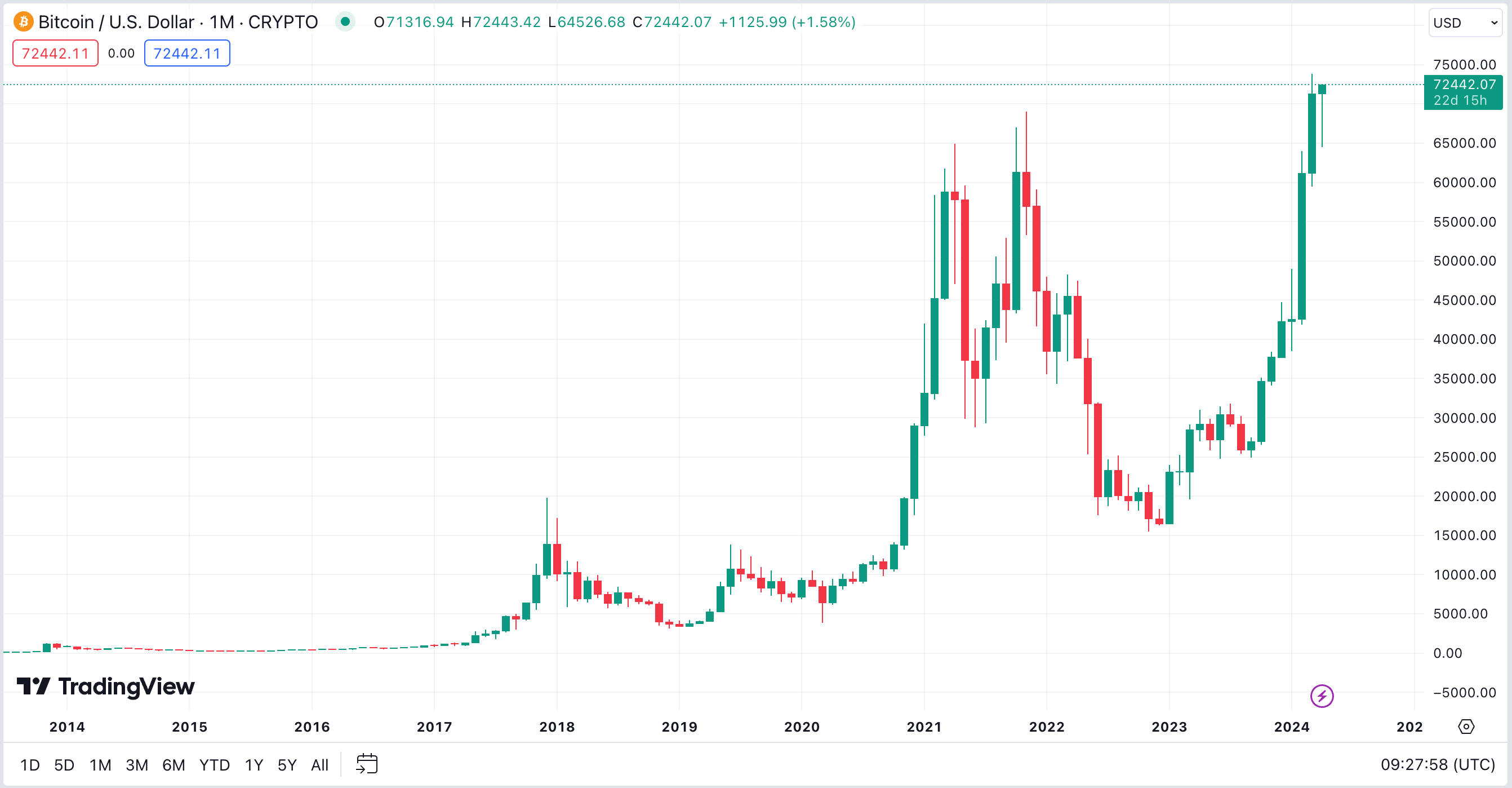
Bitcoin's price has shown significant volatility over the years.
For instance, in 2013, the price rose from around $20 to $1,242, but fell to $314 in 2014. In 2017, the price once again soared to $20,000 but dropped to $3,122 in 2018.
Bitcoin's price is influenced by various factors
Bitcoin's price is influenced by various factors, including supply and demand, media coverage, regulatory policies, technological developments, and the macroeconomic environment. For example, a significant reason for the price increase in 2017 was extensive media coverage of Bitcoin. A key reason for the price decline in 2018 was increased regulation by governments.
Despite the short-term volatility, the long-term trend for Bitcoin's price appears to be upward.
Since its inception in 2009, Bitcoin's price has increased by tens of thousands of times. Although there have been significant ups and downs over the past decade, the overall trend remains upward.
Market Perspectives
Bitcoin is predicted to reach as high as $120,000 by 2024 — Standard Chartered Bank has revised its Bitcoin price forecast upwards.
In 2024, Bitcoin is expected to break through $70,000 — BITMEX founder Arthur Hayes predicts.
In the future, every Wall Street firm will have a Bitcoin ETF product. Once Bitcoin ETFs become commonplace, Bitcoin will see widespread adoption. The next 10 to 20 years look very bullish. — Anthony Scaramucci, founder of Skybridge Capital
Bitcoin funds outperform 99% of mainland funds, prompting fund managers to take action. — Securities Times Network
If people start valuing the digital scarcity, utility, and trustlessness of Bitcoin, then the price of Bitcoin and similar assets will ultimately skyrocket.
— Predicted by Satoshi Nakamoto
Bitcoin Halving: A New Beacon for Institutional Investment
Bitcoin halving will gradually reduce the total supply of Bitcoin while demand remains stable or grows, leading to an imbalance in the supply-demand relationship. This inherently injects strong upward momentum into Bitcoin, highlighting its scarcity and potential as a valuable asset.
For institutional investors, Bitcoin halving is an investment opportunity not to be missed. They believe that the scarcity of Bitcoin gives it significant potential for value preservation and appreciation, making it an attractive addition to investment portfolios to hedge against risks like inflation.
Moreover, the Bitcoin halving cycle often coincides with heightened market sentiment, providing an excellent entry point for institutional investors to buy Bitcoin and reap substantial returns. The emergence of Bitcoin ETFs has made it easier for institutional investors to invest in Bitcoin. These factors interact to make the Bitcoin halving cycle a new beacon for institutional investors.
However, the Bitcoin halving cycle also carries risks, such as significant price volatility and uncertain regulatory policies. Institutional investors need to consider these risk factors carefully and devise prudent investment strategies to mitigate risks and maximize returns.
Bitcoin halving cycle represents a significant opportunity for institutional investors to invest in Bitcoin. They should seize this opportunity, invest wisely, and strategically position themselves to ride the waves of the Bitcoin tide and harvest substantial returns.
